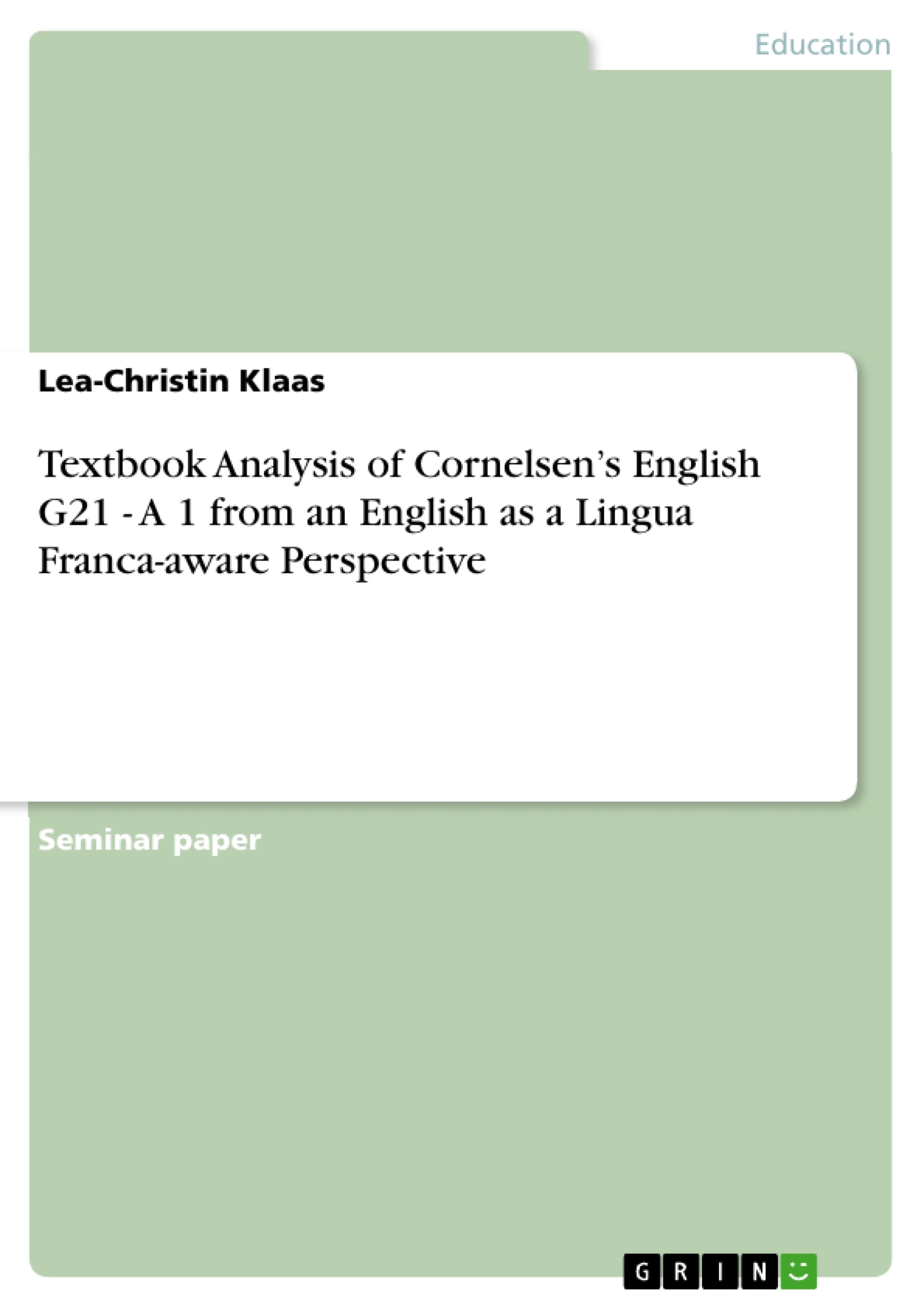This paper deals with the analysis of Cornelsen's English G 21 - A1 textbook for secondary schools, published in 2007 for students in year 5, from an English as a lingua franca-aware perspective. First, the theoretical framework will be presented, where important definitions such as English as a lingua franca will be explained. Afterward, the applied chapter will be presented with its learning goals and strategies and a short reference concerning the curriculum will be made.
In the analysis, the first chapter of the textbook will be examined and evaluated by applying Syrbe and Roses' research questions as well as the criteria from Galloway and a few other interesting aspects to look at. Finally, a conclusion will be drawn regarding the teaching material and the own future teaching.
In this paper, a textbook will be analyzed from an English as a lingua franca-aware perspective. A lingua franca describes a "contact language, that is, a vehicular language between speakers that do not share a first language", so for example a German and a French agreeing on talking English because the German does not speak French and the other way around. Here it is important to say that this does not only include face to face communication but all types of communication including via the internet and everywhere in the world.
- Quote paper
- Lea-Christin Klaas (Author), 2020, Textbook Analysis of Cornelsen’s English G21 - A 1 from an English as a Lingua Franca-aware Perspective, Munich, GRIN Verlag, https://www.grin.com/document/1416305
-

-

-

-
Upload your own papers! Earn money and win an iPhone X. -

-
Upload your own papers! Earn money and win an iPhone X. -

-
Upload your own papers! Earn money and win an iPhone X. -

-
Upload your own papers! Earn money and win an iPhone X. -

-
Upload your own papers! Earn money and win an iPhone X. -

-
Upload your own papers! Earn money and win an iPhone X.

